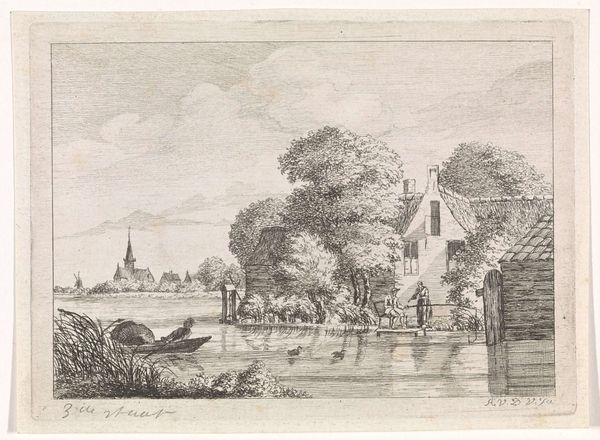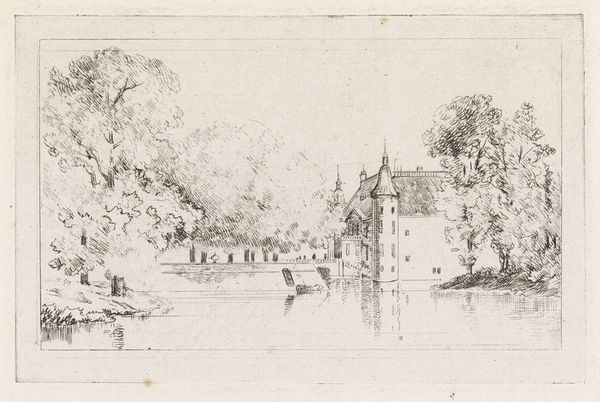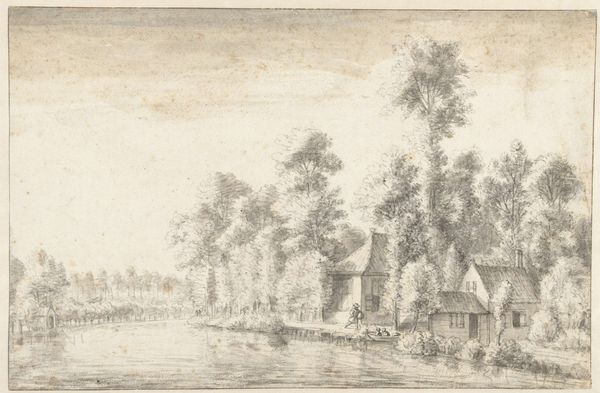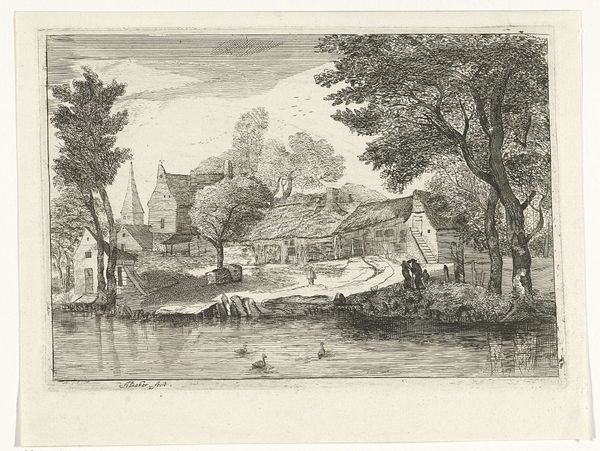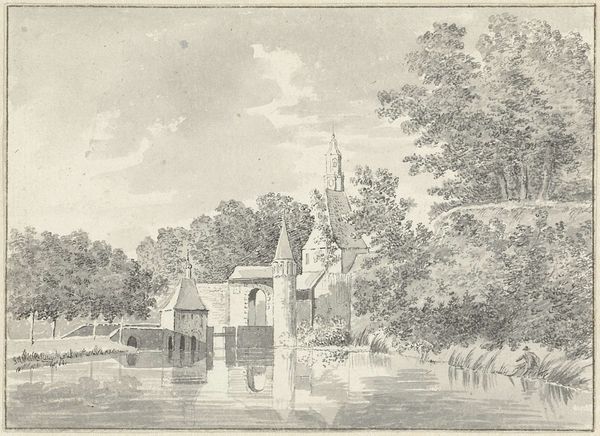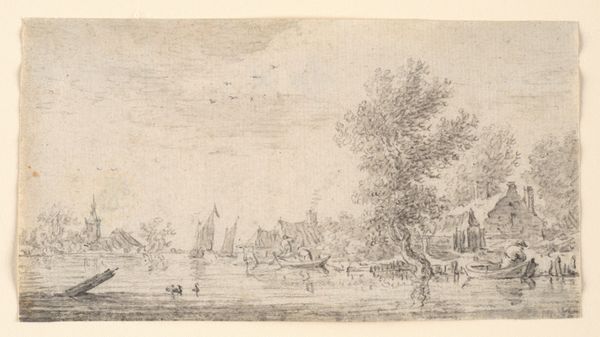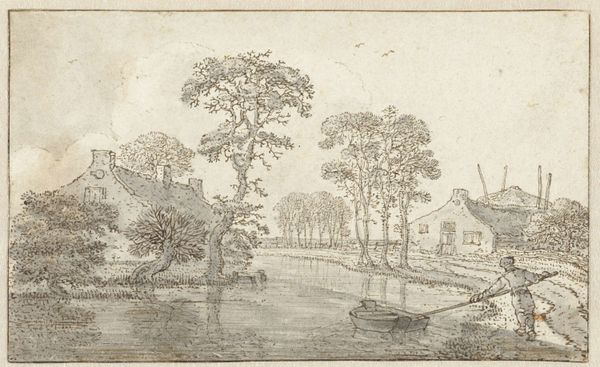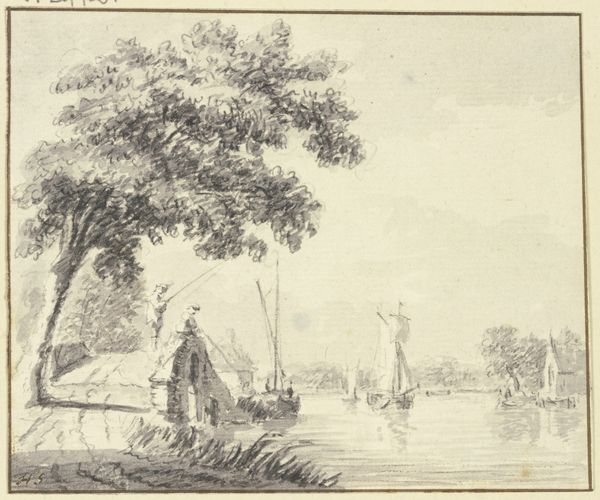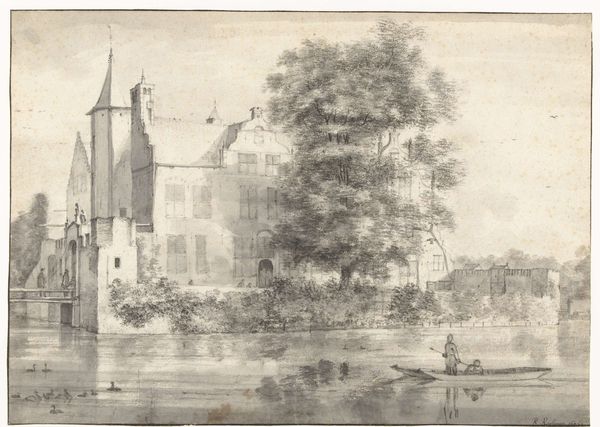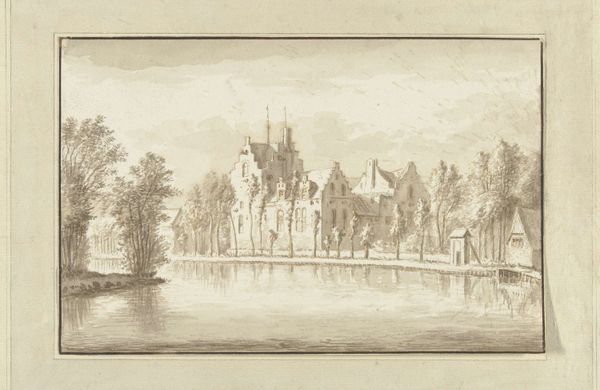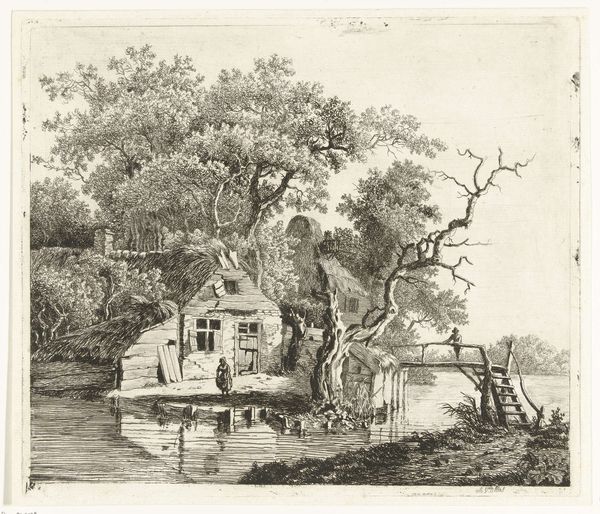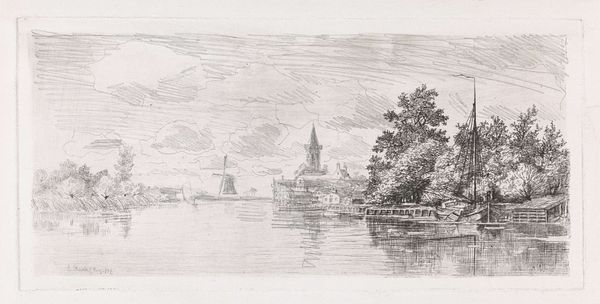
print, etching
# print
#
etching
#
landscape
#
etching
#
line
#
realism
Dimensions: height 77 mm, width 120 mm
Copyright: Rijks Museum: Open Domain
Curator: This etching by Gijsbertus Johannes Verspuy, dating from 1833 to 1862, is titled "Kasteel aan het water" and resides here at the Rijksmuseum. What strikes you immediately? Editor: The intricacy, definitely. And how light seems to radiate from the water. It's meticulously crafted—the texture of the trees against the rigid castle walls… very deliberate. Curator: Deliberate indeed. Let’s consider Verspuy’s material choices. Etching allowed for precise, repeatable lines, fitting with the increasing demand for affordable landscape prints during the period. How does the medium contribute to the content and consumption of such art? Editor: Absolutely. Etching democratizes art, making it accessible to a wider audience. Think of the socio-political implications: depicting a castle like this wasn't just about aesthetic beauty. Who did that castle represent? Land ownership, power, the privileged. Disseminating these images probably influenced perceptions and perhaps fueled social critiques, even subtly. Curator: I agree that this work subtly hints at class dynamics. I want to further explore the materials involved: the paper itself, the inks used, even the etching tools—these details speak to a growing industrialization of art production, making images more broadly available. And note how labor intensive etching remains. How does it merge "craft" with this burgeoning industrial mindset? Editor: Good point. By emphasizing craft, we acknowledge the artist’s labor—Verspuy didn’t just mass-produce. This print embodies tension, straddling traditional artistry and emerging technologies. But what kind of agency is exerted here? Does capturing these locations promote the ruling class? Perhaps we're witnessing the complex relationship between art, labor, and propaganda within social structure? Curator: That complexity is key. It’s neither a simple endorsement, nor a strident critique, but an important artifact revealing those tensions in material form. Verspuy’s process gives us access to visualizing, even embodying these dialogues, within its very existence. Editor: Exactly! Situating artwork, like Verspuy’s castle scene, allows us to peel back layers of cultural history; beyond mere scenery, its context is as potent as the images themselves, reminding us art engages, questions and reflects back what's happening. Curator: Thank you for drawing the material, social and political dynamics! It is truly exciting. Editor: My pleasure; together, we unveiled not only an artifact from the past but also critical dimensions about ourselves.
Comments
No comments
Be the first to comment and join the conversation on the ultimate creative platform.
